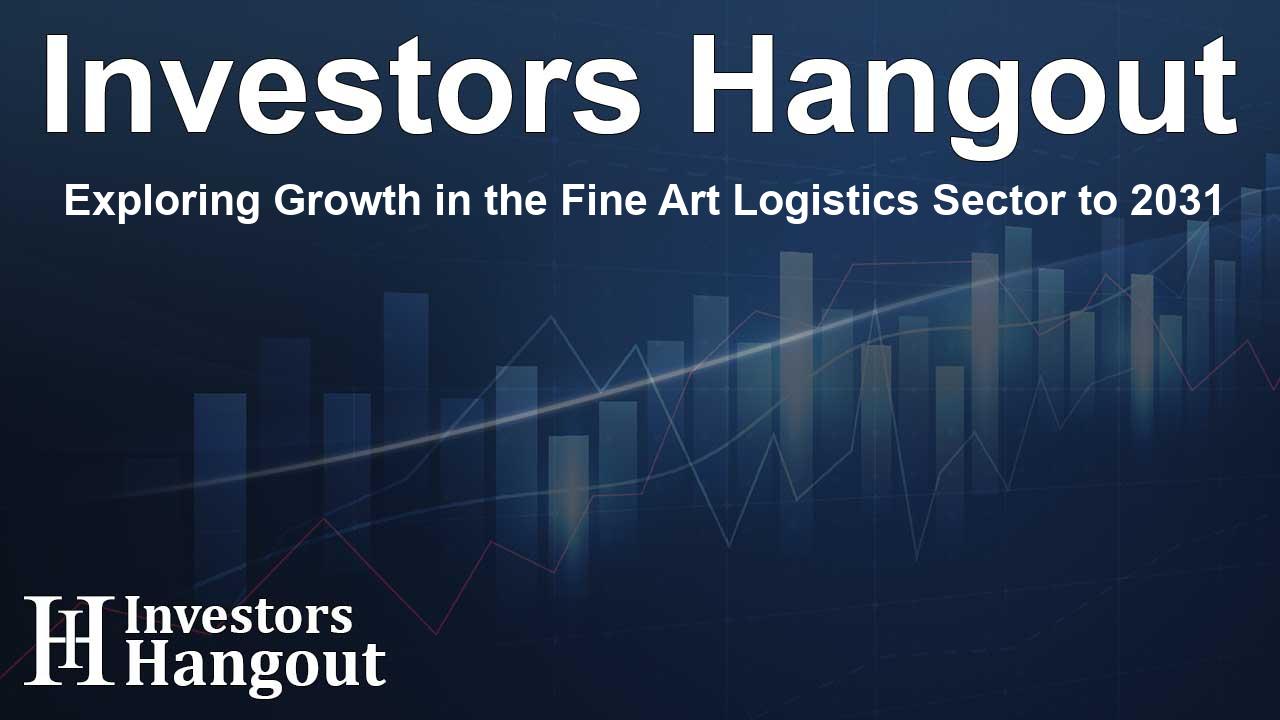Exploring Growth in the Fine Art Logistics Sector to 2031

Growth of the Fine Art Logistics Market
The Fine Art Logistics Market is experiencing significant growth, with projections estimating it will reach $4.7 billion by 2031. This remarkable increase reflects a compound annual growth rate (CAGR) of 4.1% from the previous years. Factors contributing to this trend include the rapid expansion of the global art market. As the market for art flourishes, the necessity for dedicated logistics services that can safely transport, store, and ensure these valuable artworks has surged.
Driving Factors of Market Expansion
One of the key drivers behind the rising Fine Art Logistics Market is the increasing number of art fairs and exhibitions around the world. These events bring together artists, collectors, and curators, amplifying market activity. As more artworks are exhibited, the need for logistics services specialized in handling delicate and valuable art grows. Ensuring the safe transport and installation of artworks is crucial, making dedicated logistics providers invaluable as the art industry expands.
Importance of Specialized Logistics Providers
Logistics for fine art requires careful planning and execution. The complexity of transporting art comes from the unique challenges involved, such as temperature control, humidity, and the risk of damage. For instance, logistics companies are now leveraging advanced inventory tracking technologies, including barcode systems. This ensures that artworks are monitored throughout their journey, enhancing security and providing peace of mind to art owners and collectors.
Impact of Technological Advancements
The incorporation of modern technology in fine art logistics drives operational improvements. Companies are investing in sophisticated systems that allow real-time updates on the status of artworks. This trend towards digitization not only enhances the efficiency of logistics services but also improves communication with clients, thus further elevating customer satisfaction.
Geographical Insights on the Market
As of recent evaluations, North America has emerged as the leader in the Fine Art Logistics Market, accounting for a substantial share of revenue. Europe follows closely. Meanwhile, the Asia Pacific region is poised to exhibit the highest growth rate during the forthcoming years. This growth is attributed to the increasing participation of Asian countries in global art markets.
Fine Art Logistics Market Segmentation and Key Players
The Fine Art Logistics Market can be segmented into various categories such as transportation, packaging, storage, import clearance, and others. Notably, the transportation segment commands a significant share within the market. Key players in this industry include renowned companies such as Yamato Transport, DHL, and Masterpiece International. These firms are actively seeking to enhance their market position through innovative strategies, collaborations, and geographical expansions, aiming to better serve the growing demands in art logistics.
Recent Developments in Fine Art Logistics
Several notable developments have occurred in the Fine Art Logistics sector. For instance, major logistics providers have begun to expand their services to cater specifically to the needs of the arts and culture sector. This includes tailored solutions that ensure the secure handling and transportation of artworks. The continuous opening of new facilities reflects the growing recognition of this niche market, promising a bright future for fine art logistics.
Concluding Thoughts on the Market's Future
The rise of auction houses and their collaboration with logistics providers further boost the demand for specialized art transportation services. As galleries and collectors increasingly engage in international exhibitions, the complexities and challenges of transporting artworks across borders necessitate the expertise of fine art logistics firms. Increased international collaboration and the rise of global art markets indicate that the Fine Art Logistics Market will continue to grow significantly.
Frequently Asked Questions
1. What is the projected size of the Fine Art Logistics Market by 2031?
The Fine Art Logistics Market is projected to reach $4.7 billion by 2031.
2. What factors are contributing to the growth of the market?
The expansion of the global art market and the increasing need for specialized logistics services are primary contributors to market growth.
3. Who are the key players in the Fine Art Logistics Market?
Key players include Yamato Transport, DHL, and Masterpiece International, among others.
4. How is technology impacting the logistics of fine art?
Technology enhances efficiency through real-time tracking and improved communication, ensuring the safe handling of delicate artworks.
5. Which region is expected to register the highest growth in the Fine Art Logistics Market?
The Asia Pacific region is anticipated to show the highest growth rate in the coming years.
About The Author
Contact Dominic Sanders privately here. Or send an email with ATTN: Dominic Sanders as the subject to contact@investorshangout.com.
About Investors Hangout
Investors Hangout is a leading online stock forum for financial discussion and learning, offering a wide range of free tools and resources. It draws in traders of all levels, who exchange market knowledge, investigate trading tactics, and keep an eye on industry developments in real time. Featuring financial articles, stock message boards, quotes, charts, company profiles, and live news updates. Through cooperative learning and a wealth of informational resources, it helps users from novices creating their first portfolios to experts honing their techniques. Join Investors Hangout today: https://investorshangout.com/
The content of this article is based on factual, publicly available information and does not represent legal, financial, or investment advice. Investors Hangout does not offer financial advice, and the author is not a licensed financial advisor. Consult a qualified advisor before making any financial or investment decisions based on this article. This article should not be considered advice to purchase, sell, or hold any securities or other investments. If any of the material provided here is inaccurate, please contact us for corrections.
